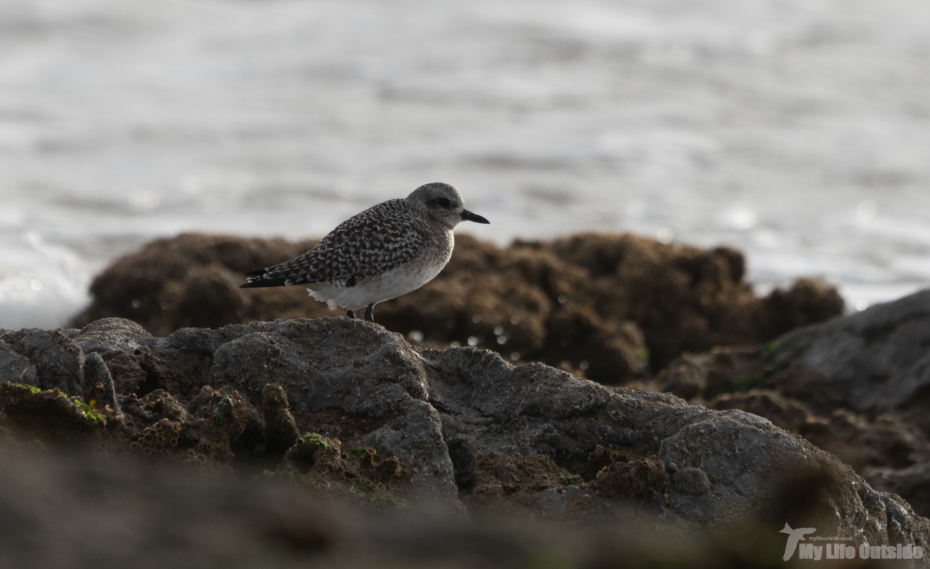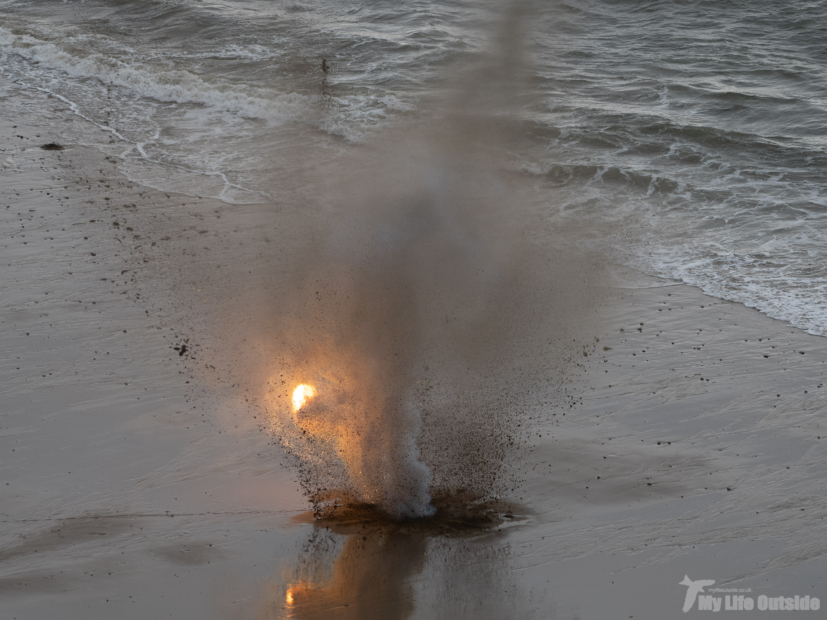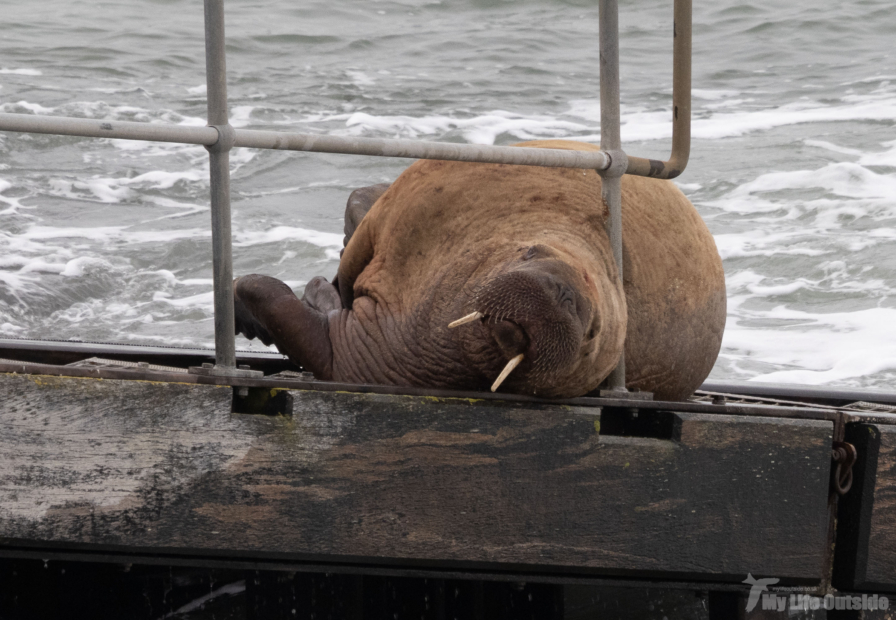This weekend I took a walk around Whiteford Sands on Gower, starting from the car park at Cwm Ivy and following the beach to the lighthouse at Whiteford Point, before heading back to the car along Whiteford Burrows. During the few hours that I was out there I saw an amazing variety of wildlife as well as some very intriguing man-made features that I will share with you here over the next few posts.
Firstly lets start with the wildlife. My approach to the beach was accompanied with the sight of a Kestrel sitting atop the cliffs at Cwm Ivy Tor. This particular bird can regularly be seen in the same spot presumably due to the commanding views that it offers over the surrounding countryside. Just below the Kestrel there were a good number of Common Green Grasshoppers.
On Whiteford Sands themselves I was met with a rather unusual beach visitor. Despite looking somewhat like crashed UFO’s, the beach was playing host to numerous Barrel Jellyfish that had been washed up on the previous high tide. These can be easily identified primarily by their massive dome shape that can measure up to 1m in diameter. Indeed some of the ones that I saw were approaching that size. Beneath the dome can be found eight mouth-arms that resemble a cauliflower in shape. I believe that the colour variation exhibited in the photographs below is due to natural variation and differing extents of decomposition. The Barrel jellyfish is present from July to September so expect to see many more of these being washed up on Gower beaches throughout the next month or so.
Due to spring tides the sea levels were very low for my visit, exposing some prime feeding ground for the many gathered waders. In all I estimate that there were around one thousand Oystercatchers present, as well as several hundred Ringed Plovers(some now in their winter plumage) and twenty or so Dunlin. Surprisingly there were even a couple of Grey Herons fishing in some of the larger pools of water. Mixed in with the huge flocks were a couple of rarer species, including a single Brent Goose and a couple of Sandwich Terns moving up the Burry Inlet on the incoming tide. The reason for so many birds at this location is evident when you take a closer look at the sand and see the wealth of life that is present.
The casts shown above are produced by Lugworms, a favourite for both birds and fishermen alike. I actually watched the single cast being produced which is something that I have never been lucky enough to witness before. After photographing the area I couldn’t bring myself to walk across it and actually headed further up the beach to bypass the casts as it was a scene that was just too magnificent to disturb.













0 Comments